 The AGM of the Friends of Willow Court Special Committee will be on Thursday 26 September, 7 pm
The AGM of the Friends of Willow Court Special Committee will be on Thursday 26 September, 7 pm
at the Community House. Brett Noble, the Project Officer for the restoration of the site will be the guest speaker.
Past to Present. Memory to Action
Brett Noble, the Conservation Committee’s Senior Project Manager, today showed me through the previously closed and sealed sections of the north and west wings of the Barracks. I was able to 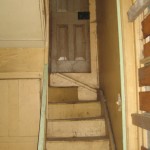 gleam a little of the breadth and depth of restoring the Barracks today while looking through these sections, while in good condition each of these rooms and wings need extensive works. Suring up floors and replacing some boards through to whole floor replacement in some areas will be needed. The electrical system will need to be completely replaced, some switching equipment has asbestos still contained as part if it’s construction while most of the barracks has external exposed electrical cabling which will either be redirected through the roof space or under the floor.
gleam a little of the breadth and depth of restoring the Barracks today while looking through these sections, while in good condition each of these rooms and wings need extensive works. Suring up floors and replacing some boards through to whole floor replacement in some areas will be needed. The electrical system will need to be completely replaced, some switching equipment has asbestos still contained as part if it’s construction while most of the barracks has external exposed electrical cabling which will either be redirected through the roof space or under the floor.
 Brett was able to show me some significant areas and interesting spaces that will enrich any tourist activities once explained and interpreted sensitively. The writing of numbers in a section was something I have past many times but failed to see. Brett has had someone investigate this number writing to see if there is any patterning. While this sort of thing is not common for all people who have had some mental health issues during their life, it and other types of patterning can be found in many institutions around the world.
Brett was able to show me some significant areas and interesting spaces that will enrich any tourist activities once explained and interpreted sensitively. The writing of numbers in a section was something I have past many times but failed to see. Brett has had someone investigate this number writing to see if there is any patterning. While this sort of thing is not common for all people who have had some mental health issues during their life, it and other types of patterning can be found in many institutions around the world.
The rooms retained some of their original features and this was exciting, the fireplaces and doors and locks are maintained well. The windows are different in these wings as opposed to the south wing, possibly delineating between worker space and patient space.
I was able to have a conversation about the Burra Charter (Learn more) and how this would apply to the restoration at Willow Court, Brett was very good at explaining that the Charter is a starting point to creating the discussion for future works and not a prescriptive rule to stand by. This is why the conservation committee have to look at the possible future use of the site because this will influence what and how much work needs to go into a space and how much change needs to or doesn’t need to happen. This is going to be an important part of the works and without a plan of use, money could be wasted.
Preliminary works have started in the south wing with the investigation stage underway. Brett was able to point out some original features which will be carefully maintained and restored. We also discussed the surfacing of the landscaping and that some of the original road and brick paving in front of the Barracks will remain because it is a suitable sub structure to support the coloured gravel pathways that will lead tourist to the Barracks and will have good drainage abilities already in place.
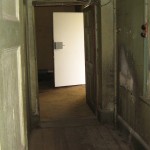 One interesting point that was made is the word “Barracks”, while most of us think about a solders garrison, the context that it is used at Willow Court is a range of small rooms with exits into the veranda and open courtyard, so a lot of the doorways that lead from one room to another are later additions.
One interesting point that was made is the word “Barracks”, while most of us think about a solders garrison, the context that it is used at Willow Court is a range of small rooms with exits into the veranda and open courtyard, so a lot of the doorways that lead from one room to another are later additions.
The current fence that used to be around the old Administration building has now been removed and the admin building actually is looking good, well done Mario. The new placement of the temporary fence is going to be the location for the new solid fence and boundary between the two complexes.
We moved into Bronte Ward to have a walk through and it was wonderful to see all the windows in place and really making a difference to the building. I like the idea of having wheelchair access to all the buildings. This is a very important feature considering the history of the site. I liked the idea of removing the newer toilets at the back of the ward and restoring the veranda along the south and west sides which will now face beautifully into the garden with this beautiful tree as a centre piece. 
Click here to see the Gallery
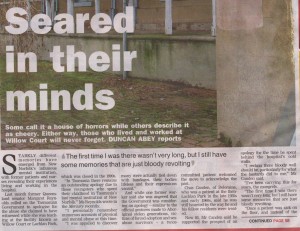
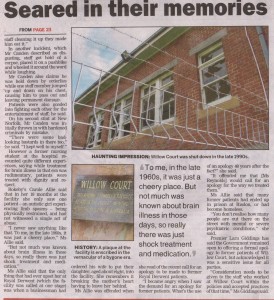 More from the Mercury about an apology to the previous Patients of Royal Derwent Hospital/Willow Court Training Centre. Two people are featured in this article, one an ex-patient and the other an ex-staff member. Both people wrote to the Mercury a couple of weeks ago with diverse and opposed opinions and experiences. Article from Margaret Reynolds in today’s Mercury
More from the Mercury about an apology to the previous Patients of Royal Derwent Hospital/Willow Court Training Centre. Two people are featured in this article, one an ex-patient and the other an ex-staff member. Both people wrote to the Mercury a couple of weeks ago with diverse and opposed opinions and experiences. Article from Margaret Reynolds in today’s Mercury
Today I wrote to each of the candidates that are seeking to be elected in the seat of Lyons, this is what I asked of each of the candidates:
Can you inform us about your plans to support the restoration of Willow Court?
The restoration fund is inadequate to meet the needs of the site, what can you do about this?
Do you support the apology to the previous Patients of Willow Court?
I look forward to their response and will inform you as soon as I have a reply.
 (R -L) Dick Adams (Labor), Pip Brinklow (Greens) and Eric Hutchinson (Liberal)
(R -L) Dick Adams (Labor), Pip Brinklow (Greens) and Eric Hutchinson (Liberal)

Dick Adams Replies:
Thank you for your email in relation to Willow Court.
I am already supporting the development of Willow Court and the Federal Labor Government has contributed funds towards securing the site. I will continue to assist where I can.
Restoration takes time and once there are projects put forward to Heritage Australia, I will support them to be funded.
The apology is a matter the State Government needs to address and in principle I would support it.
Dick Adams MP
Federal Member for Lyons
Pip Brinklow Replies:
I would like to thank Dick Adams and Pip Brinklow for taking the time to reply, I did get a reply from Erick Hutchinson who wanted to phone me, I still look forward to that call and hope I can relay Erick’s answers to the group soon.
 Brett Noble the Senior Project Manager for the Willow Court Conservation Special Committee last Tuesday night gave the Friends of Willow Court Special Committee a briefing about progress of the restoration of the site. The work started last Monday on the Barracks, but not that you would be able to tell yet. The first stage is a full inspection of the whole job to gain a clear understanding of the buildings concerned and what is new and what is older and needs restoration.
Brett Noble the Senior Project Manager for the Willow Court Conservation Special Committee last Tuesday night gave the Friends of Willow Court Special Committee a briefing about progress of the restoration of the site. The work started last Monday on the Barracks, but not that you would be able to tell yet. The first stage is a full inspection of the whole job to gain a clear understanding of the buildings concerned and what is new and what is older and needs restoration.
After this process, application is made to Heritage Tasmania for approval to proceed with the works. Some works will start sooner as these are considered as normal maintenance. The windows will soon be uncovered and restored while the larger works will proceed when approval is granted and that is expected in November.
Brett’s attention to the heritage detail came through as the briefing continued and he showed a passion for the site, even for its smallest artefacts. One thing that was made clear is that despite the age of the buildings they will have wheelchair access.
The amount of money that will be spent on these buildings and the works is in the order of 1.5 million dollars. While there has to be flexibility in the process here and it would have to be emphasise that the plans are still fluid and will be further developed through documenting what needs to be done and also through receiving comment from the public through the planning approval process.
The completion date could be in March 2014 but this is something that is defiantly flexible.
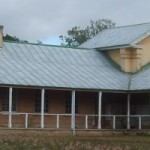 The Barracks: He reported that the northern side of the Barracks was in good condition inside, some work on the roof is needed. The middle section of the Barracks has no floor and will lend itself to an archaeological dig which will be a tourist drawcard. The south rooms of the Barracks will also be a multi-purpose space with any larger artefacts being on wheels and movable.
The Barracks: He reported that the northern side of the Barracks was in good condition inside, some work on the roof is needed. The middle section of the Barracks has no floor and will lend itself to an archaeological dig which will be a tourist drawcard. The south rooms of the Barracks will also be a multi-purpose space with any larger artefacts being on wheels and movable.
 The Grounds: The grounds will be landscaped starting with the entry way which will draw the eye towards the restored Barracks building. The use of lush green lawns and coloured rock pathways will be used to emphasise areas and take the visitor to different locations. The front of the Barracks (forecourt) can be used for the dramas and market events like we have already seen on open days in this area.
The Grounds: The grounds will be landscaped starting with the entry way which will draw the eye towards the restored Barracks building. The use of lush green lawns and coloured rock pathways will be used to emphasise areas and take the visitor to different locations. The front of the Barracks (forecourt) can be used for the dramas and market events like we have already seen on open days in this area.
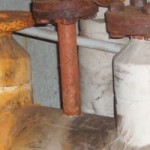 Bronte: Bronte will be a multipurpose use building with space in the large rear area to have class room activities etc. and the middle space will have a kitchenette fitted, the toilets in the middle of the old ward will be demolished and the veranda re-instated. The plant room will have minimal restoration and will have a Perspex door fixed so people will be able to view the large industrial pipe works and equipment used to distribute the old steam heating system.
Bronte: Bronte will be a multipurpose use building with space in the large rear area to have class room activities etc. and the middle space will have a kitchenette fitted, the toilets in the middle of the old ward will be demolished and the veranda re-instated. The plant room will have minimal restoration and will have a Perspex door fixed so people will be able to view the large industrial pipe works and equipment used to distribute the old steam heating system.
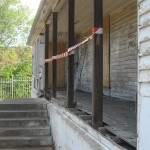 Frascati House: This property will be mothballed until funds are available to do the appropriate works although the boundaries will be defined with a stratum title. The fence around the building will be moved to allow the Friends of Frascati to continue with restoration of the gardens. A study of the flora surrounding the house will determine what age and historical significance the plants are.
Frascati House: This property will be mothballed until funds are available to do the appropriate works although the boundaries will be defined with a stratum title. The fence around the building will be moved to allow the Friends of Frascati to continue with restoration of the gardens. A study of the flora surrounding the house will determine what age and historical significance the plants are.
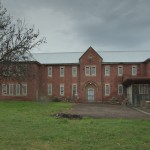 Carlton and Alonnah Wards: These wards are set to have a separate access road south of the Bronte ward and the buildings will be opened to businesses to occupy and help give the remaining area some much needed funds. While this was a disappointment to the Friends of Willow Court, there is an understanding of the amount of money and buildings all in need of some restoration. Discussion took place around how to restore this area in another form so that visitors could find out about it when visiting the site.
Carlton and Alonnah Wards: These wards are set to have a separate access road south of the Bronte ward and the buildings will be opened to businesses to occupy and help give the remaining area some much needed funds. While this was a disappointment to the Friends of Willow Court, there is an understanding of the amount of money and buildings all in need of some restoration. Discussion took place around how to restore this area in another form so that visitors could find out about it when visiting the site.
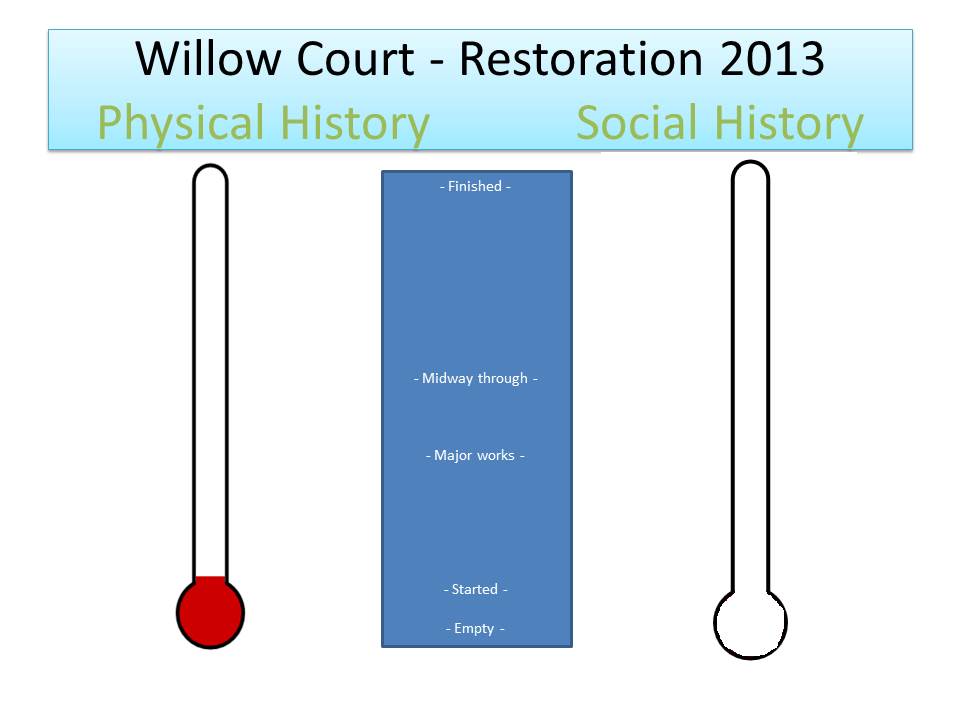 Well, restoration has started so we thought we would measure the restoration and prompt restorers and decision makers about the Social History that also needs to be restored and protected. While it is fantastic to have the physical history started we all need to be aware that the social history also needs just as much effort as the physical.
Well, restoration has started so we thought we would measure the restoration and prompt restorers and decision makers about the Social History that also needs to be restored and protected. While it is fantastic to have the physical history started we all need to be aware that the social history also needs just as much effort as the physical.
What do we mean by social history? A view of historical events seen in terms of social trends.
Over the 173 years of operation Willow Court and all the other names this institution was known by, has a wealth of social history that needs to be told, shared and archived.
We can gather all this history and store it for future generations to understand our history in this context.
Books, audio recordings, photos and film are all mediums that can record these wonderful stories. If you have been told stories from past generations, that is important to share as part of our history.
After a conversation with a New Norfolk resident and business owner earlier this year I recorded a podcast. He told me that he had never worked at Willow Court or Royal Derwent Hospital but what he described to me was a totally integrated community that had a special perspective of the life and times of the Workforce and Patients that called Willow Court home. Ken’s Story and link to the podcast
Please if you are asked to tell your story, check the credentials of the person you are communicating too, ask:
Where is this going to be stored?
Where is this going to be used?
Who is going to listen to this?
Will the recorder of this information be respectful to the sensitive nature of the Social History?
This article can be used as a basis for your decision to communicate your story. Willow Court Living Memory Report
 WILLOW COURT BARRACKS PRECINCT RENEWAL WORKS July 2013 Media Release
WILLOW COURT BARRACKS PRECINCT RENEWAL WORKS July 2013 Media Release
“Restoration work on Willow Court will be moving to a higher and more exciting level over the next few months ”Chairman of the Derwent Valley Councils Willow Court Conservation Special Committee David Llewellyn said today. “The work on repairing the windows at Bronte has brought the building to life again, but there is much more to do.”
The Committee at its July meeting concluded an “Expressions of interest process” for work on The Barracks, Bronte and landscaping surroundings of the heritage precinct. The successful proponent was Xsquared Architects, incorporating Inspiring Place and the Centre for Heritage at Oatlands. Xsquared was selected after a rigorous assessment from a very competitive field of contenders and will lead a group of experienced specialists in oversighting the next restoration stage of works. “Our focus now is to finalise works approvals with the various regulatory bodies and to invite comments from the New Norfolk community.” David Llewellyn said. “We want public input into the plans and we also want the public and local community to get involved in the current works. David Llewellyn again emphasised that local contractors have already been used on current works and local contractors will be actively pursued for the new works once approvals secured.
Restoration works on The Barracks will start very soon, including repairs to exterior and interior elements of the building, and opening up other rooms.
Willow Court is a nationally recognised heritage precinct, of great importance to the region and nation. The most historic of the many buildings that make up the site is The Barracks, built around 1830. The Barracks was built as Tasmania’s first hospital for invalid convicts but soon was exclusively used as a ‘lunatic asylum’. “The project is an excellent example of collaboration between local, State and Federal governments, and I am keen to build on that collaborative effort in order to see full use of the buildings at Willow Court”, David Llewellyn reiterated.
Media Contact: David Llewellyn 0418122048
 We are 1 (one) year old today!
We are 1 (one) year old today!
We started on the 25th July 2012 with this website which offered a balanced view of Willow Court, Royal Derwent Hospital and the restoration process. We want to include the people history of the heritage site in a respectful and sensitive manner.
We have attracted over 123,000 hits on this website and have two facebook groups with 300 plus members who are interested in Willow Court and it’s people history.
We went live in early August 2012 with a small amount of content and now we have a range of films, audio reports and interviews, a number of people who have contributed photos and lot of articles and links.
[nggallery id=15]
*Four new pictures 23/7/13*
A bit of tender love and care shown to the wards on the oval precinct have clearly shown benefits. Now in private hands the Wards all were in a state of disrepair and poorly managed by the previous owner, the Derwent Valley Council. It is hoped as part of the sale of these wonderful buildings that contain such memories there has been an archaeological dig to find any precious artifact such as those found in J Ward last month (Old Story). It would be considered due diligence when dealing with the sale of historic properties that such a dig is undertaken externally and internally but I haven’t heard of the Council following common practice in this matter. I have never seen the Derwent House sign look like that!
You can take the audio tour through these wards with Anne McKinstray here